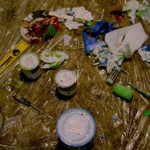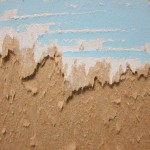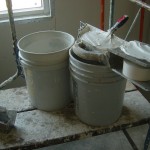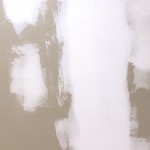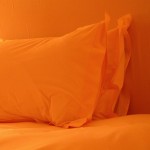 If you’re pregnant or just had your baby, the natural instinct to nest may be tugging at you. You want your home and nursery to be just right for your new baby. Unfortunately, those well-intentioned changes to the home, from painting a room to a full remodel are usually anything but natural. I’d like to suggest you don’t start your house and nursery projects while you’re pregnant or with a newborn.
If you’re pregnant or just had your baby, the natural instinct to nest may be tugging at you. You want your home and nursery to be just right for your new baby. Unfortunately, those well-intentioned changes to the home, from painting a room to a full remodel are usually anything but natural. I’d like to suggest you don’t start your house and nursery projects while you’re pregnant or with a newborn.
The reason is simple: the fetus and newborn are sensitive at levels well below what an adult might tolerate. They are extremely vulnerable to toxic chemicals and other contaminants. If you’re familiar with EWG’s Baby Body Burden study, maybe you already know that cord blood contains almost 300 highly toxic chemicals, proving that whatever the mother ingests, inhales and absorbs is passed on to the baby: http://www.ewg.org/reports/bodyburden2/execsumm.php.
Green products and materials are not necessarily non-toxic, and even the least toxic versions, newly installed, are usually too toxic for the developing fetus and newborn until all odors have completely dissipated. It doesn’t matter if they come with green certifications. Certifications still aren’t good enough, as their standards are limited in scope and are certainly not developed specifically for the newborn or fetus.
Instead, focus on making the house healthier. Put off as much as you can for a few years and make as few changes as possible that are not directly related to health. When your child is older, and past the most critical time in his or her development, you can undertake your safe, non-toxic projects (including precautions for exposures to new, outgassing materials and construction dust).
Here are some tips for healthy home nesting:
- Less is more: If you must paint or make even small changes, do not inhale outgassing from new materials, no matter how “green” and “non toxic” they claim to be. Leave while the work is being done and re-enter the house only when ALL odors have dissipated 100%.
- Replace all toxic household, cleaning and personal products with non-toxic products: http://safecosmetics.org/article.php?id=308
- Check your home for sources of moisture: Whether or not you react to mold, mold is toxic, period, particularly for the developing fetus and newborn. For starters, follow these steps outlined by the EPA: http://www.epa.gov/mold/preventionandcontrol.html.
- If you suspect or smell mold, get a mold inspection: Hire an IAQA certified, independent mold inspector to survey your home. (Don’t hire a mold remediation company for the inspection.) http://www.iaqa.org/consumer-info
- Reduce EMFs: There are many preventive steps you can take at no cost. Learn about them for free on my website and blog: https://marycordaro.com/
- Caution, carpet removal is toxic: Removing carpet stirs up high levels of toxic chemical-laden dust and microscopic particulates, which pollute the entire house. Remove carpet under airtight containment, and then deep clean the room afterwards. A mold remediation company can most safely remove it and deep clean for you.
This article was originally published on Pregnancy Awareness.

